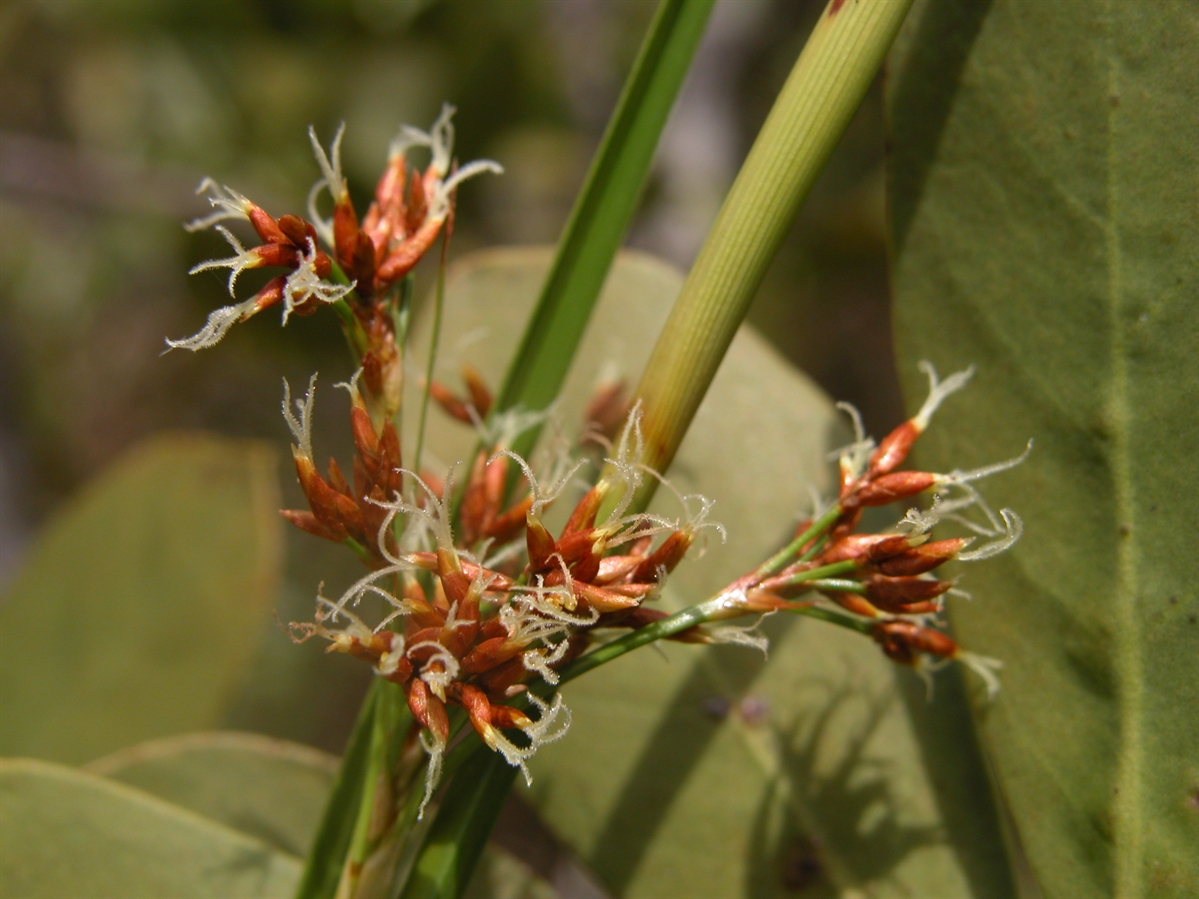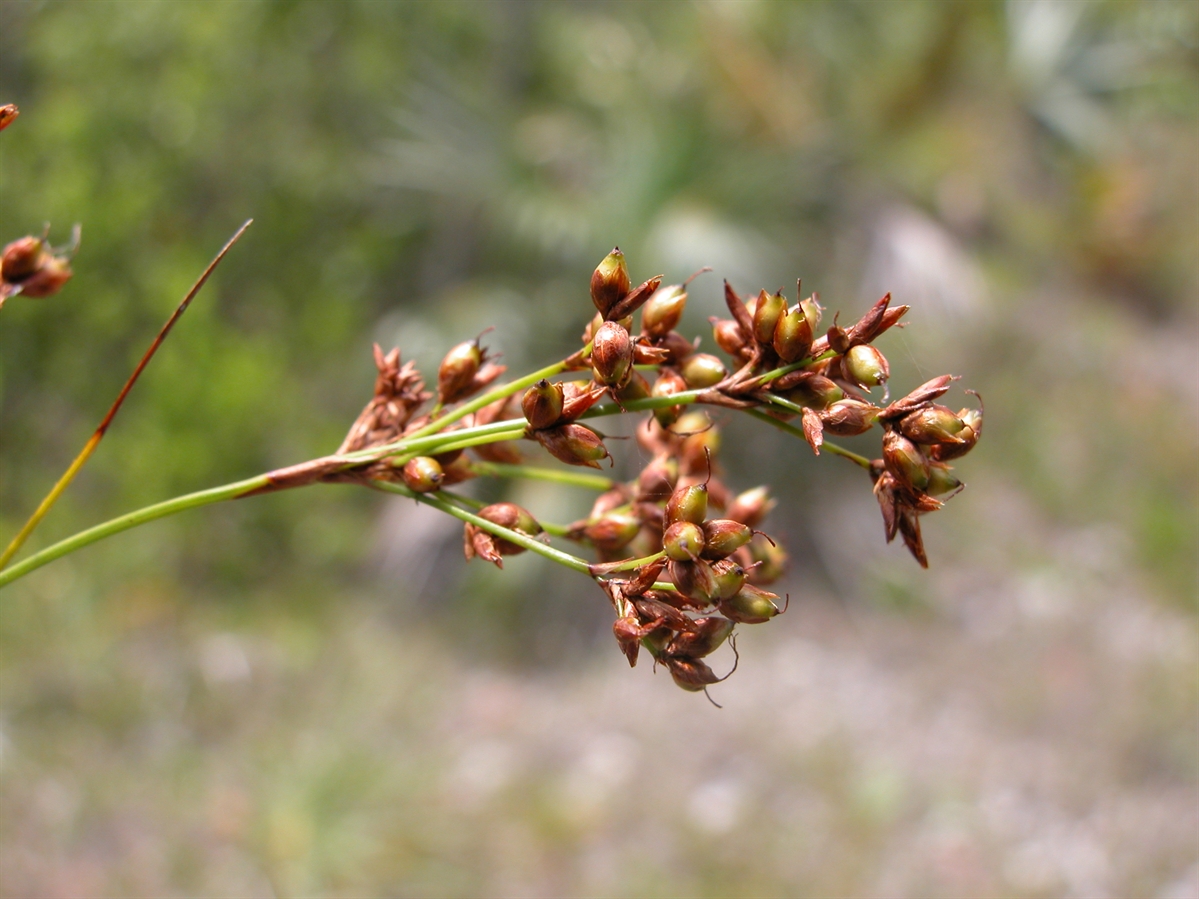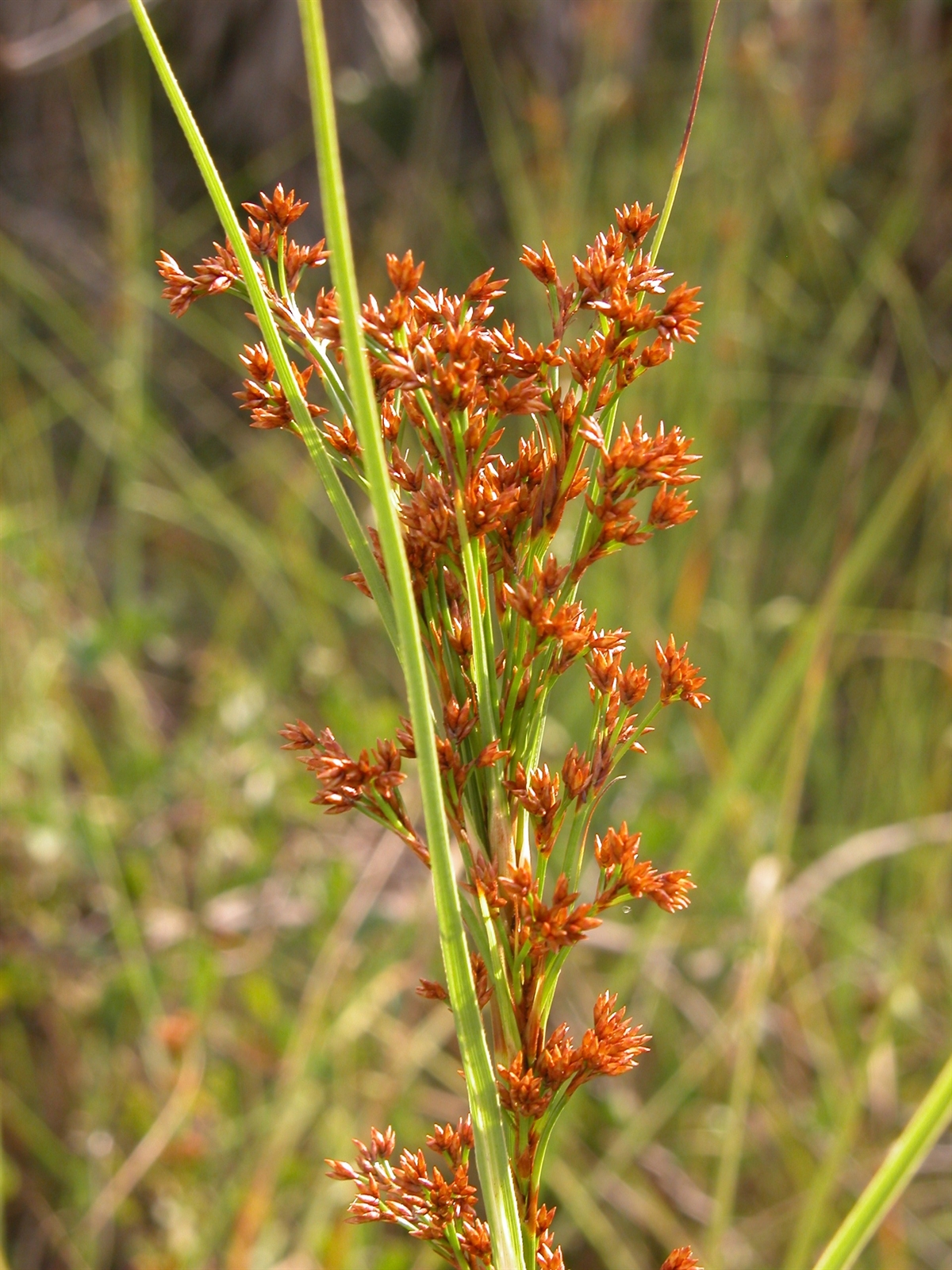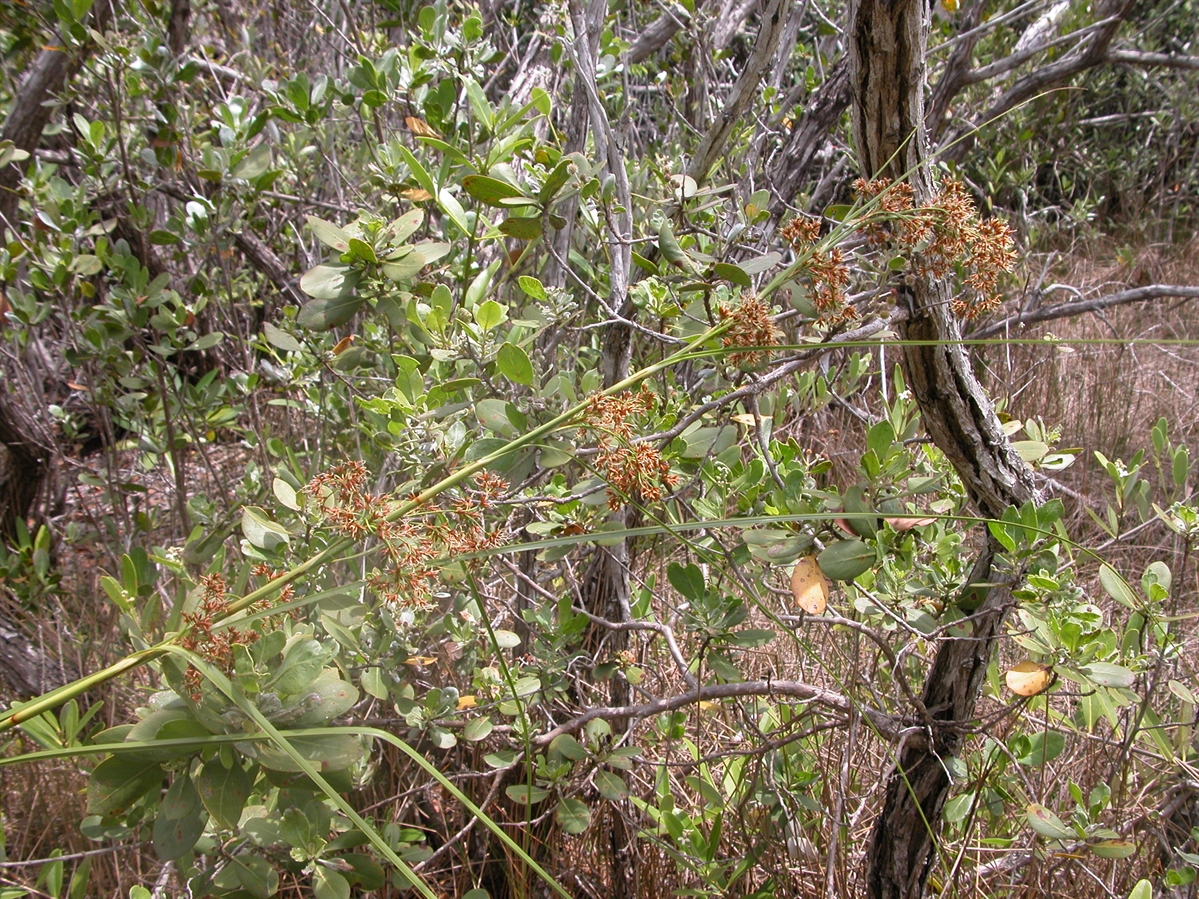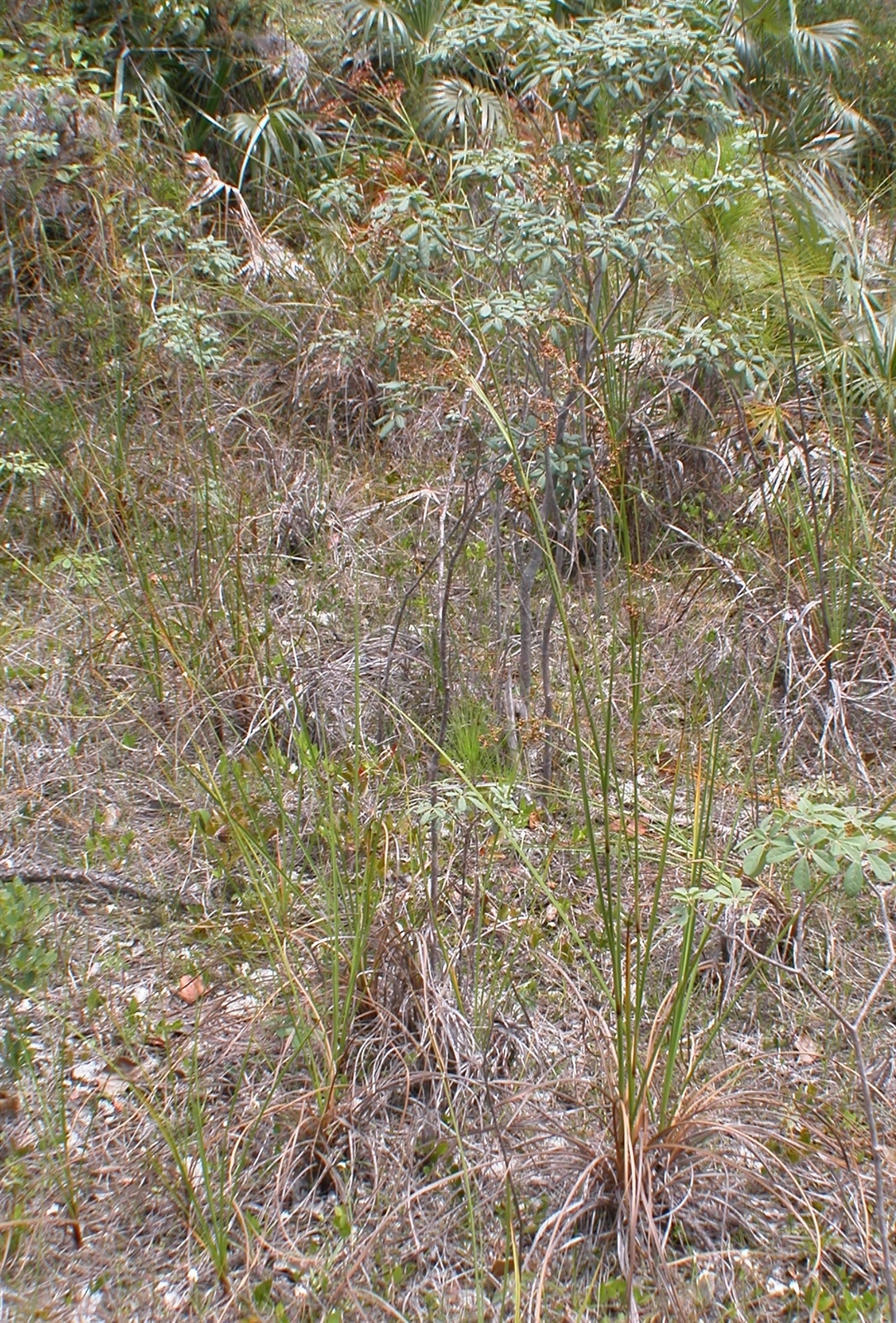Habit: Cladium mariscus grows as a clumping herb to 3 meters in height (typically 1.5 meters) that produces rhizomes. The leaves are arranged alternately, parallel-veined, to 150 cm in length, and have sharp saw toothed margins.
The incomplete, imperfect and perfect, actinomorphic flowers are arranged in panicle. The individual flowers are arranged in spikelets of which there are 2-6 grouped at the ends of the inflorescence branches. The spikelets are subtended by 2-3 scales. The lower flowers in each spikelet are infertile. There is no calyx or corolla. There are 2 stamens. The ovary is superior with a single locule. The fruit is a brown achene at maturity.
Habitat: Cladium mariscus grows along the edges of fresh water wetlands, in Sabal palmetto Woodlands and in mangrove areas that are only slightly brackish.
Distribution: Cladium mariscus occurs on all island groupings in the Lucayan Archipelago as well as the southern United States, the entire Caribbean region and Mexico.
Medicinal/Cultural/Economic usage: Cladium mariscus is not known to be used medicinally in the Lucayan Archipelago.
